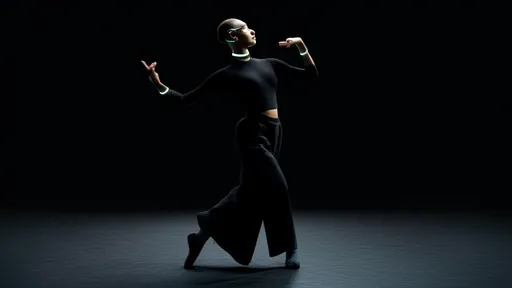The world of intellectual property has expanded beyond visual and auditory elements to embrace the ephemeral yet powerful realm of scent. Olfactory trademarks, though rare, represent a fascinating intersection of art, commerce, and legal innovation. As brands seek new ways to distinguish themselves in saturated markets, the registration of smell marks has emerged as both an avant-garde strategy and a complex legal challenge.
Unlike traditional trademarks that rely on logos or jingles, scent marks operate in a dimension that defies easy categorization. The very nature of smell—subjective, evanescent, and culturally coded—poses unique hurdles for registration. Courts and trademark offices worldwide grapple with fundamental questions: Can a scent be sufficiently distinctive? How does one graphically represent an aroma? These queries strike at the heart of intellectual property law's adaptation to non-traditional marks.
The landmark case of Ralf Sieckmann v. Deutsches Patent- und Markenamt (2002) established critical precedents. The European Court of Justice ruled that while scents could theoretically function as trademarks, the applicant's chemical formula and verbal description of "balsamically fruity with a slight hint of cinnamon" failed to meet the requirement of clear graphical representation. This decision sent ripples through legal communities, forcing practitioners to reconsider how olfactory creations might satisfy registration standards.
Pioneering companies have nevertheless succeeded where others stumbled. Hasbro's Play-Doh secured U.S. registration for its distinctive "sweet, slightly musky, vanilla-like fragrance with slight overtones of cherry" in 2018—a scent deliberately engineered to trigger childhood nostalgia. Similarly, Verizon obtained protection for the "flowery musk scent" pumped into its stores, creating what marketers call "sensory branding." These cases demonstrate that when a scent acquires secondary meaning—when consumers directly associate it with a particular source—the barriers to registration become surmountable.
The technical challenges of scent documentation push the boundaries of trademark practice. Applicants must navigate between scientific precision and consumer perception, often employing gas chromatography analyses alongside poetic descriptions. Some jurisdictions accept scent samples deposited in specialized containers, though questions about scent degradation complicate this approach. The quest for standardized representation continues, with some scholars proposing "scent libraries" analogous to color pantones.
Cultural dimensions add layers of complexity to olfactory marks. What smells pleasant or distinctive in one society may carry negative connotations elsewhere. The durian fruit's divisive aroma, for instance, might delight consumers in Southeast Asia while repelling Western markets. Similarly, the scent of fresh-cut grass could evoke suburban comfort in America but agricultural labor elsewhere. Trademark offices must weigh these cultural variables when assessing a scent's registrability and potential for geographic expansion.
Perfume houses face particular dilemmas in this evolving landscape. While individual fragrance formulas enjoy patent and trade secret protection, the concept of trademarking scents creates tension between exclusivity and industry norms. Chanel No. 5's iconic bouquet remains unprotected as a trademark, though its composition is fiercely guarded through other legal mechanisms. This distinction highlights the fine line between protecting brand identity and stifling creative expression in fragrance development.
The commercial implications extend beyond luxury goods. Supermarkets experiment with bread-scented marketing to increase bakery sales; real estate agents deploy vanilla or coffee aromas to make properties feel "homey"; casinos design signature air blends to encourage longer stays. As these practices proliferate, the question shifts from whether scents can function as brands to how businesses will navigate the patchwork of international protections.
Emerging technologies promise to reshape olfactory branding. Digital scent devices and AI-driven aroma synthesis could enable precise scent replication across locations—from retail stores to virtual reality environments. Such advancements may force trademark systems to evolve beyond current frameworks, perhaps incorporating biometric data about scent perception or blockchain-based scent authentication.
Legal scholars debate whether the current system adequately serves this nascent field. Some argue that requiring graphical representation—a holdover from visual trademark paradigms—unfairly disadvantages olfactory marks. Others counter that relaxing standards could lead to "scent monopolies" on basic aromas. The balance between encouraging innovation and maintaining public domain access to natural smells remains contentious.
Practical hurdles persist even after successful registration. Enforcement poses unique evidentiary challenges—how does one prove scent infringement without subjective testimony? The costs of consumer surveys to establish secondary meaning often exceed $100,000, putting protection out of reach for smaller creators. These economic realities currently limit scent marks to deep-pocketed corporations, though artisanal perfumers and scent artists advocate for more accessible systems.
The artistic community watches these developments with particular interest. Olfactory artists like Peter de Cupere and Sissel Tolaas create works that interrogate smell's cultural meanings—from the scent of war zones to the aromas of extinct flowers. As museums acquire scent-based installations, questions arise about preserving these works and protecting their integrity through trademark or other IP frameworks.
Looking ahead, the globalization of commerce suggests increasing clashes between jurisdictions with differing approaches to non-traditional marks. The EU's stringent graphical representation requirement contrasts with the U.S. focus on acquired distinctiveness, while Asian markets develop their own hybrid systems. International harmonization efforts, though nascent, may determine whether olfactory branding remains a niche practice or becomes mainstream.
What began as legal curiosity has matured into a sophisticated discussion about how we commodify sensory experience. The registration of smell marks forces us to confront fundamental questions: Can law capture the intangible? Should every aspect of human perception become propertized? As courts and legislatures grapple with these issues, one truth becomes evident—the future of branding will engage not just our eyes and ears, but our noses as well.

By /Jul 23, 2025

By /Jul 23, 2025

By /Jul 23, 2025

By /Jul 23, 2025

By /Jul 23, 2025

By /Jul 23, 2025

By /Jul 23, 2025

By /Jul 23, 2025

By /Jul 23, 2025

By /Jul 23, 2025

By /Jul 23, 2025

By /Jul 23, 2025

By /Jul 23, 2025

By /Jul 23, 2025

By /Jul 23, 2025

By /Jul 23, 2025

By /Jul 23, 2025

By /Jul 23, 2025